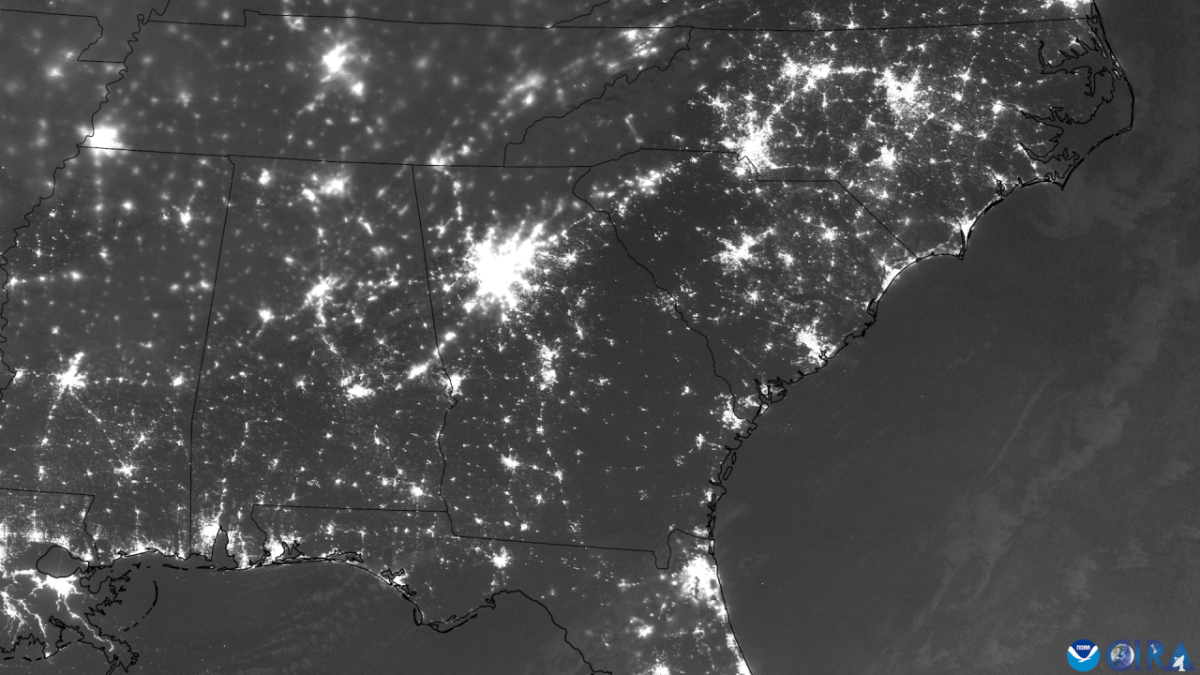Study: Storm-Driven Blackouts Left Thousands Without Care As Clinics Closed Across Southeast
New Direct Relief survey finds nearly 28,000 appointments canceled, $12.9 million in lost revenue, and critical medicines and vaccines spoiled during Hurricanes Helene and Milton.

SANTA BARBARA, Calif., Aug. 18, 2025 /3BL/ - Power outages from Hurricanes Helene and Milton forced temporary closures at more than half of safety-net health care providers surveyed across Florida, North Carolina, Georgia and South Carolina, according to a comprehensive new study released today by Direct Relief. Read the full report here.
Among 80 community health centers and free and charitable clinics responding to the survey, 43 organizations (54%) said power loss forced the temporary closure of at least one site. The closures led to nearly 28,000 canceled or delayed patient visits — an outcome that researchers have tied to elevated longer-term mortality rates. The survey also found widespread financial losses and medicine spoilage that compounded the health impact.
Key findings
- 54% of surveyed safety-net clinics and health centers (43 of 80) reported power outages that forced at least one site to close.
- Nearly 28,000 medical visits were canceled or delayed.
- $12.9 million in lost revenue across 23 clinics and health centers.
- Nearly one-fourth of organizations (19 of 80) discarded temperature-sensitive medicines and vaccines.
- $3.1 million in reported infrastructure damage.
- Power outages lasted up to 19 days, with a median duration of 47 hours.
Bedrock providers left vulnerable
“Health centers and clinics are often the bedrock health care providers in their communities,” said Sara Rossi, managing director of the Health Resiliency Fund at Direct Relief. “Without power, their ability to deliver critical, even life-saving services is compromised, leaving vulnerable patients at serious risk.”
“When power goes out, I’m in scramble mode to save vaccines. Without electricity, my X-ray, ultrasound and health records are down — and patient care stops,” said John Newman, executive director and chief medical officer at Volunteers in Medicine in Hilton Head Island, S.C.
Widespread backup power gaps
The survey revealed alarming gaps in backup power infrastructure at safety-net health care facilities. Unlike hospitals, which are legally required to maintain backup generators and fuel supplies, community health centers and free and charitable clinics face no such mandates.
- Only 12% of surveyed organizations had backup power at all service sites.
- 50% had none.
- Even among facilities with backup power, 17% reported failures, often from running out of fuel.
Severe financial and medical impacts
The financial toll was significant. Twenty-three organizations reported revenue losses totaling $12.9 million while they were closed. Among FQHCs that lost revenue, the average loss was $803,000 per organization.
Nearly one-fourth (19) of the providers were forced to discard temperature-sensitive medicines and vaccines when their refrigerators lost power. One clinic reported losing $60,000 worth of vaccines alone. These losses not only carried financial costs but also reduced availability of critical treatments such as insulin for diabetics and Tdap vaccines needed to prevent tetanus after hurricane-related injuries.
Twenty-five organizations suffered infrastructure damage totaling more than $3.1 million.
Patients hit hardest
The closures disproportionately affected vulnerable populations who rely on safety-net health care providers. FQHCs serve more than 32 million patients nationwide — nearly 1 in 10 U.S. residents — including 1 in 5 rural residents and 1 in 3 people living in poverty. Among patients at free and charitable clinics, 84% lack health insurance.
These patients often have higher rates of chronic conditions like diabetes and hypertension, making them especially vulnerable during and after disasters. Many also face barriers such as multiple jobs, language differences and transportation challenges that make rescheduling appointments difficult.
Following the storms, 38% of surveyed organizations reported surges in patient demand, with some seeing increases of more than 50% as displaced residents sought care while other facilities remained closed.
Link to rising hurricane-related deaths
The study’s findings take on added significance in light of research on hurricanes’ long-term health effects. A 2024 study in Nature found that excess deaths attributable to hurricanes can be 300 or more times higher than immediate fatalities, with health care disruptions among the key drivers.
The research tracked all 501 hurricanes hitting the continental United States between 1930 and 2015. While the average hurricane caused 24 immediate deaths, storms led to between 7,170 and 11,430 additional deaths in the 20 years after landfall.
“These outages don’t just close clinics for a day — they ripple into long-term health risks,” Rossi said.
Climate change amplifying threats
Beyond hurricanes, the survey showed that power reliability is an ongoing challenge for safety-net clinics. More than 35% of organizations said unreliable power is a persistent concern in their area, with nearly 1 in 5 losing power at least once per quarter.
“It just adds to the uncertainty and the anxiety collectively around the state. The threat is very real and very widespread,” said Gianna Van Winkle, director of emergency management programs at the Florida Association of Community Health Centers, which helped conduct the survey.
The 2024 tornado season was the second-worst on record, with 1,791 tornadoes striking the United States—many spawned by hurricane activity.
About the survey
Direct Relief surveyed 394 FQHCs and free and charitable clinics across Florida, Georgia, North Carolina and South Carolina — representing most FQHCs in the region and 84% of estimated free and charitable clinics. The 80 respondents included 25 FQHCs and 55 free and charitable clinics operating about 500 clinical sites combined.
Note to editors: Read the full report. Additional data and interviews with health care providers are available upon request.
About Direct Relief Direct Relief is a humanitarian aid organization, active in all 50 states and more than 80 countries, with a mission to improve the health and lives of people affected by poverty or emergencies. Direct Relief provides medical assistance when and where it is needed most—without regard to politics, religion, or ability to pay.
Media Contact: Paul Sherer, paul.sherer@directrelief.org.

